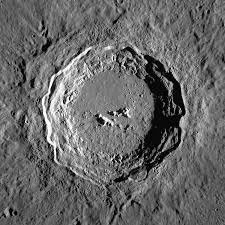
India’s Chandrayaan-3 mission marked a historic milestone in lunar exploration when, on August 23, 2023, it became the first mission to achieve a soft landing on the moon’s south pole. The landing site, named Shiv Shakti Point, has now been estimated to be 3.7 billion years old, a period that coincides with the emergence of primitive microbial life on Earth.
Mission Overview
Chandrayaan-3, India’s third lunar exploration mission, was launched by the Indian Space Research Organisation (ISRO) with the goal of studying the moon’s surface, particularly its south pole region. The mission’s key components, the Vikram lander and Pragyan rover, provided crucial data about the moon’s geological history and surface composition.
Age Estimation of Shiv Shakti Point
ISRO’s Physical Research Laboratory conducted a detailed analysis of the site, using high-resolution imaging to study craters and rock formations. Their study of 25 craters revealed an estimated age of 3.7 billion years, an observation corroborated by additional crater studies in the vicinity.
Geological Features of Shiv Shakti Point
The Shiv Shakti Point showcases diverse lunar terrain, classified into three types:
- High-relief rugged terrain
- High-relief smooth plains
- Low-relief smooth plains (where the lander touched down)
Interestingly, the low-relief smooth plains were found to be the oldest, offering valuable insights into the moon’s past.
Impact Crater Analysis
The landing site is surrounded by major impact craters, including:
- Manzinus Crater (3.9 billion years old)
- Boguslawsky Crater (4 billion years old)
- Schomberger Crater
These craters have played a significant role in shaping the geological features of the region by dispersing ejecta from past impacts.
Rock Distribution and Composition
The Pragyan rover examined 5,764 rock samples, of which 525 measured over 5 meters in length. Notably, the largest rocks were found near a fresh crater, located 14 km south of the landing site, suggesting minimal space weathering and recent geological activity.
Significance of the Findings
The findings from Chandrayaan-3 provide valuable insights into the moon’s evolution and its connection to Earth’s history. The estimated age of Shiv Shakti Point coincides with a crucial period on Earth when microbial life began to emerge. Furthermore, studying the geological features and crater formations could offer clues about the moon’s past conditions and the potential for life in similar extraterrestrial environments.
As India continues its journey in space exploration, the Chandrayaan-3 mission and its discoveries at Shiv Shakti Point stand as a testament to the nation’s growing prowess in planetary science and lunar research.

